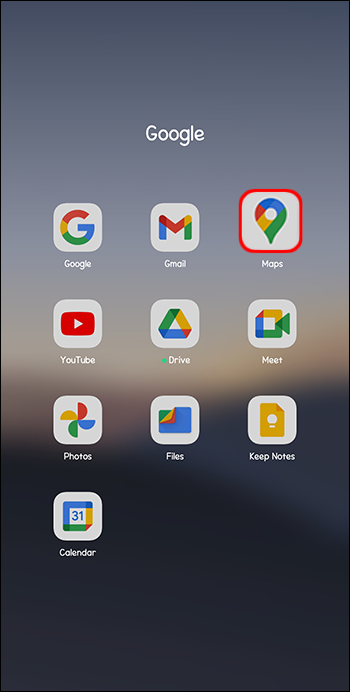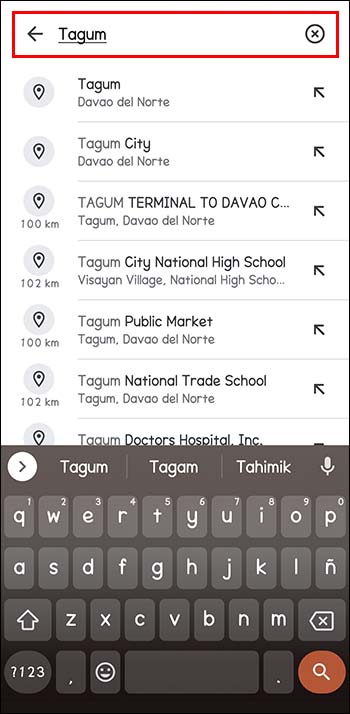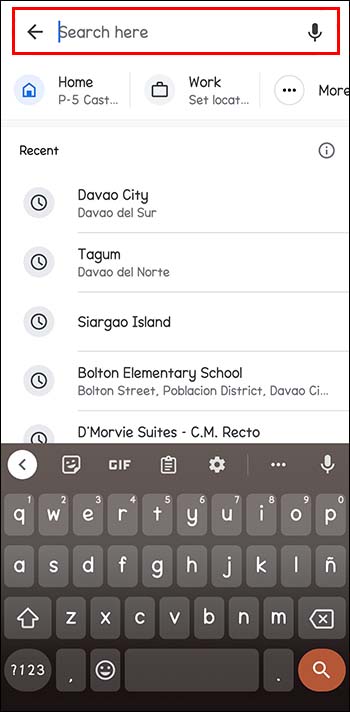Google Maps highlights the route that will quickly get you to your destination. However, sometimes an alternative route is highlighted in grey and customization options are possible.
If you want to change routes on Google Maps, you’ve come to the right place. This article will help you choose and change your route on Google Maps.
Changing Routes on the App
If you decide to change your route for whatever reason, Google Maps makes it quite simple. On desktop, you need to:
- Open Google Maps.

- Type the location name or address you want to visit and press “Enter.”

- When you see the location, click “Directions” just below the info card.

- Select the starting point.

- On the menu box above your journey information, select the directions you want to utilize: walking, cycling, public transit, driving, etc.

- On the map, several routes will be outlined. The one set as default is recommended by Google Maps. This is often because the app believes it to be the best route. Therefore, it’s usually highlighted in blue.

- Instead of using the recommended route, you can choose the alternative grey route. If so, click on the grey route or any others listed on the menu to the left. Dragging changes the routes so that you can use other roads.

Changing Routes Using the Mobile App
When navigating using the mobile app, you can still change your route, regardless of the device you’re using.
- Open Google Maps and type the destination in the search bar.

- Tap Directions on the left (lower side of the info card).

- You’ll see “Your location” in a box where you need to enter the starting point.

- Select the transportation mode option in the menu bar at the top of the screen. You can choose driving, public transport, taxi, walking, or cycling.

- You’ll see all the routes suggested by the app well displayed and highlighted on the screen. The top choice, according to Google Maps, is usually in blue. If you want to use an alternate route, tap the route lines in gray. This changes your route conveniently.
Changing Routes Using Google Maps on iPhone and iPad (iOS)
Changing your route on Google Maps usually depends on whether the journey has started or not. You can add stops, opt for an alternate route, or change your destination. It’s easy to get directions using Google Maps regardless of how far you’ve traveled.
Pick an Alternative Route as You Navigate
- The need to change your route may arise while you’re already in transit. You may decide to take a detour or notice a possible delay along the way like a crash. Tap the route icon. These are the two curved arrows at the bottom of your screen. This shows a route preview and the alternate routes with estimated times of arrival (ETAs).

- Tap the alternative route to switch immediately. Current routes are blue, while others are gray.

- Check whether the navigation instructions have changed.
- If you opt to stay on the current route, select “Re-center” to continue with the previous option.

Add a Stop During Navigation
If you decide to make a stop that wasn’t in your initial plans, this can be added to your route. Of course, it may affect your estimated time of arrival at your final destination.
- While navigating, select the search icon. in the top-right of your map.

- Tap the icon or pick a category. You can see all the locations along the route you plan to take by tapping. If you want to stop at any address, tap the white and blue search icon.

- Pick the stop you want to add. You can either select or enter an address.

- Choose “Add Stop.” This is a green button located at the bottom. Tapping here adds the current route and includes the stop you’ve added.

Changing Your Destination as You Navigate
Along your route, you may decide not to go to the planned destination you added to your map. This can be changed with ease.
- Find the exit button and tap. It’s red and located in the bottom right of the screen. By doing so, you disable the current destination navigation and can now pick a new one.

- Enter your destination by tapping your current destination and erase by tapping X. You can now type the destination you want. Then, tap to select when you see the destination on your search results.

- Tap the “Start” button in the bottom of the screen and begin navigating to your destination.

Avoiding Highways, Ferries, and Tolls Before Starting the Trip
Instead of changing your route along the way to avoid tolls, ferries, and highways, check your routes beforehand.
- Select your destination.

- At the bottom of the map, tap “Directions.”

- Next to the starting point to the right, select the three dots.

- Select “Route options” in the menu.

- Choose the options you wish to avoid. Then, there’s a toggle switch next to “Avoid ferries,” “Avoid tolls,” and “Avoid highways.” This removes those routes. To ensure that Google Maps displays the trips without the above options, tap “Remember settings” and turn it on.

- To start navigating, press “Start.”

Customize Your Experience by Picking Alternate Routes
Google Maps suggests the best routes based on distance and other factors like traffic jams or accidents. You may still want to change things up and customize your route for whatever reason. You may also choose to make stops along the way. Google Maps can estimate the time it will take to get to various destinations. It’s all about what works for you.
Have you ever changed your route on Google Maps? Was it successful? Let us know in the comments section below.
Disclaimer: Some pages on this site may include an affiliate link. This does not effect our editorial in any way.































